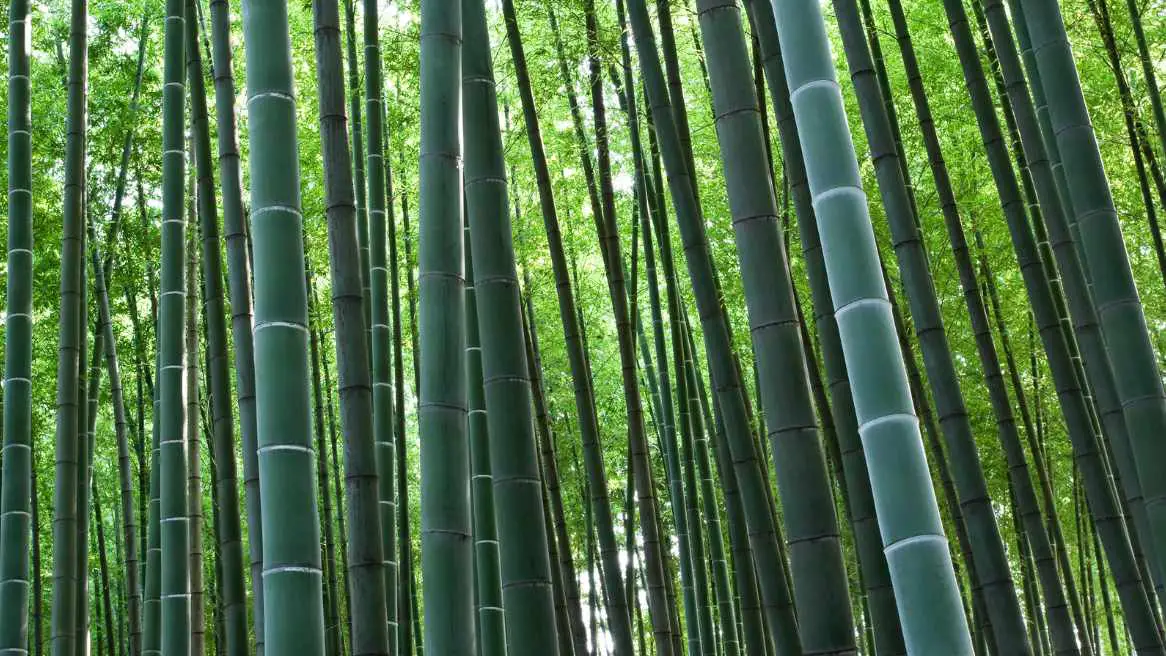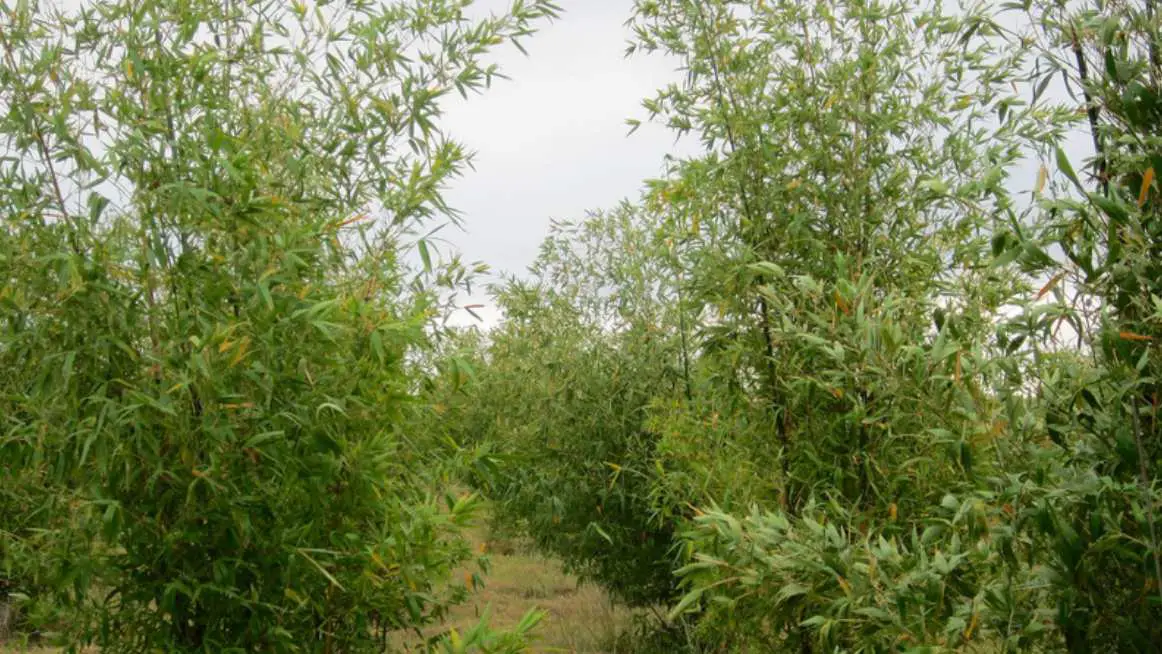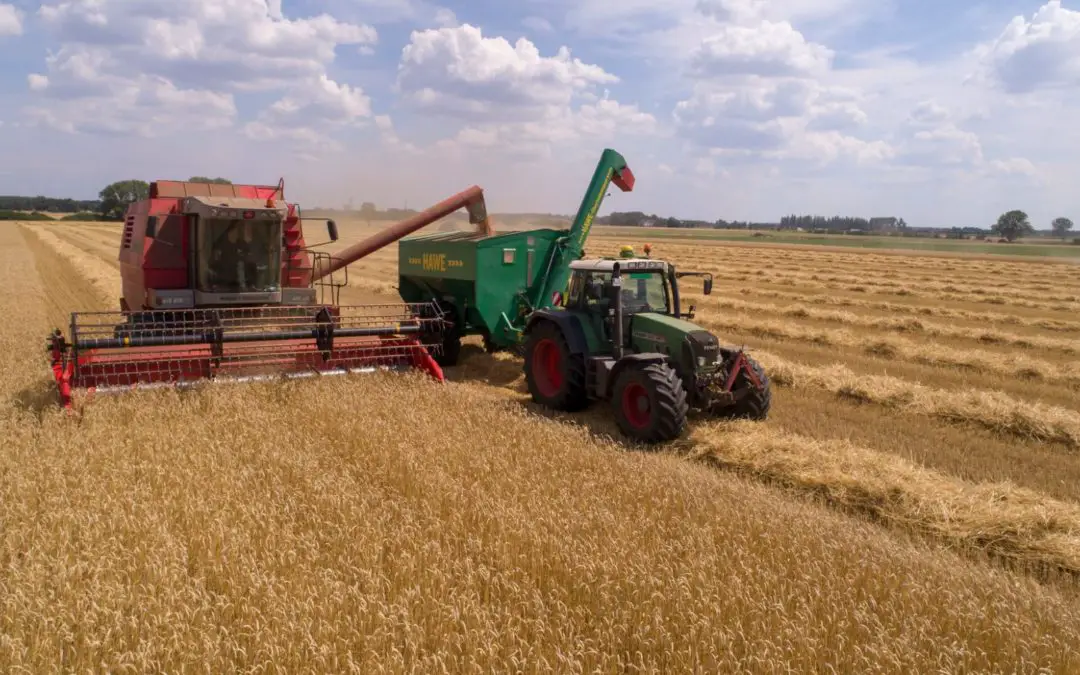With deep gratitude to the investigative journalism of Michael Pollan and to the disruptive intrusion of natural fiber alternatives into the fashion industry, the general public is growing increasingly aware of the need for a revival of sustainable agriculture. In a climate of concern and sometimes desperation, buzzwords like green, organic and sustainable may be cast into the breeze like so many granules of pollen, but they mean little without a proper context for understanding the roots of this thorny issue. Agronomy is not a subject to be mastered overnight, but one to be studied over the seasons of a lifetime.
Monoculture, or monocropping, is one of the most problematic aspects of conventional farming. While maintaining thousands of acres of a single species can allow for far greater efficiency, it also takes a serious toll on the soil and makes the plants more susceptible to pests and disease. Temperate, running bamboo often grows very successfully in a natural setting much closer to monoculture. But tropical, clumping bamboo, when grown at a commercial scale, with monocropping methods, can also have problems.
Monoculture and monocropping
In the past 80 years or so, the art and science of agriculture have undergone an astonishing transformation in order to keep up with the hyperbolic growth of the world population. The need to extract an ever-growing quantity of produce — whether for food, fuel or fiber — from a planet of limited resources has required a massive wave of innovation among an ever-shrinking number of increasingly specialized farmers. The capacity of these mega-farms to meet the demand of global consumption with sufficient supply and minimal prices represents a genuine triumph of modern civilization. But (you knew there’d be a but, right?) at what cost?
One of the key components of this hyper-efficient system of modern farming is the technique of cultivation called monoculture, growing huge areas of a single crop, such as the millions of acres in Iowa farmed exclusively for corn. If you visit almost any major farm in the world, you will see this technique in practice, row after identical row of crop X, bred to perfect uniformity and invariable mediocrity. The tidy, geometric rows may bear a certain appeal to the post-industrial, minimalist sense of aesthetic, but the impacts on both the farmland and the finished product can be detrimental.
In the old days of subsistence farming, a family would plant variegated rows of roots, tubers and vegetables to ensure themselves a diverse diet come harvest time. But because each crop has its own soil nutrient and water needs, not to mention pruning and harvesting methods, this method of “polyculture” is certainly not the most efficient for large-scale production. On the other hand, it does tend to yield a more nutritious and full-flavored product with minimal pest and disease issues.
These are the chief problems we can associate with monocropping. When thousands of acres of broccoli or cotton, for example, are cultivated en masse, they are guaranteed to deplete the soil of those specific nutrients that broccoli or cotton use most. Industrial agriculture addresses this issue with the heavy application of chemical fertilizers. Meanwhile, residue and run-off from these petrochemical fertilizers have proven harmful to both the habitat and the end consumer.
Secondly, monocropping results in the crop’s critical vulnerability to pests and diseases. An unnaturally high concentration of a given plant is sure to attract and support an unnaturally high number of whichever pests thrive on that plant, while their natural predators will remain absent or ineffective. Likewise, a plant-specific disease could spread like the plague across the exposed acreage of monoculture. Again, these man-made challenges are overcome with manmade solutions, i.e. the heavy application of pesticides and insecticides, with whose risks we are already familiar, and which chemical companies like Monsanto fervently deny.
How to draw the greatest efficiency out of a plant without chemically-intensive monocropping is a leading concern among organic farmers. Many have simply resorted to the use of more natural and organic fertilizers, animal-derived but industrially produced. But we might also look to nature for her solutions.
Successful monoculture: Forestry and bamboo
Unlike cotton and broccoli, there are a number of plants that actually thrive in monoculture conditions. Take the giant redwood, for example. They can stand alone, with reasonable success, in parks and gardens up and down the West Coast. But only in vast swaths do they truly thrive. In their native habitat, these evergreen macro-organisms generate a climate of their own, attracting storm systems to satisfy their unquenchable thirst, while also sheltering one another from the high winds. As these old-growth forests shrink, the viability of individual trees is put at peril. That ecological sensitivity makes redwoods less than ideal as a crop for commercial cultivation, but under responsible forest management, other trees can be grown and harvested for lumber with a minimal environmental impact.

In addition to certain trees, many grasses also thrive in a monoculture. One of these grasses is bamboo. Not only does it renew itself with ease (similar to your front yard after it’s mown), and grow at record rates of several inches (even up to a few feet) per day. But it also flourishes in the modern farmers’ ideal setting: the monoculture. Hence it can be cultivated on a commercial scale with minimal unnatural assistance.
As a lumber alternative, bamboo’s rate of renewability outpaces most trees by at least 10 or 20 to one. As a fiber alternative, it leaves cotton in the dust. Conventional cotton, after all, is subjected to more heavy chemical crop-dusting than any other plant on the planet.
Welcoming a healthy dose of realism
Before I go too far, waxing Pollyannish over the virtues of bamboo, we need to take a step back. Too many rose-colored websites and bamboo boosting leaflets speak broad generalities about bamboo growing three feet a day without the need for fertilizers or pesticides. This may be true, but only within a pretty narrow scope of bamboo.
There are more than 1,400 distinct species and cultivars of bamboo growing around the world under a vast variety of climates and conditions. Moso Bamboo, native to central China and shown above, is one of the most important commercial species of all. It happens to be a running bamboo, like most varieties that grow in temperate climates. As such, it’s quite happy to form a forest, with little of no competition from other species.
And after centuries of cultivation, Moso remains one of the only bamboo species for which we have any serious scientific data. That data is very encouraging and fairly consistent with the most glowing appraisals of bamboo. But it’s strictly limited to the way Moso grows in its native setting. Outside of China, the species turns out to be far less successful and far more finicky.
Running or clumping bamboo
In other parts of the world, Moso often struggles. And in the tropics, closer to the equator, running bamboo does not thrive at all. In those regions, clumping bamboo is much more productive. But those clumps, in their native habitat, will be interspersed between other native trees and plants.
As a reforestation strategy, the healthiest and most beneficial approach is to mix bamboo with other native species. Indeed, bamboo makes an excellent pioneer plant, capable of restoring degraded land and binding the topsoil together with its robust roots and rhizomes. But ideally, it should be making the terrain more hospitable for other native flora to return, not simply dominating the landscape.

In commercial cultivation, however, such a mix of bamboo and other species becomes too complex and inefficient for most farmers to maintain. So while running bamboo naturally forms a fairly uniform forest, clumping bamboo gets planted in rows. There are forests of tropical, clumping bamboo in Colombia and Indonesia, but generally, they include greater biodiversity than a forest of running bamboo. And you’ll certainly find more diversity than on a bamboo plantation.
See the article on Bamboo and Reforestation for more details.
So when these clumps are arranged in hundreds or thousands of hectares, you’re bound to see problems. As a general rule, bamboo won’t deplete the soil, Its fallen leaves actually do a pretty good job of keeping the topsoil healthy and balanced. But fungus and insects can take an interest in the plantation. Even so, the problems won’t be as serious as what you find on cotton or other monocultured food crops, but they will require attention.
Take a look at my article on the Challenges and Pitfalls of Bamboo Farming.
The risk of flowering in bamboo monoculture
Another factor that bamboo farmers can easily forget to take into account is bamboo’s exceptional flowering cycle. Each species of bamboo has a different flowering period, and it can be difficult to keep track. For some varieties, like Japanese Timber Bamboo (Phyllostachys bambusoides), you have to wait about 120 years for the plants to flower. And when they do, it can spell disaster, as every member of the species will flower at the same time. This phenomenon, common among bamboo, is called gregarious flowering, and it generally causes the plants to go to seed and die.
Other varieties of bamboo flower sporadically, at uneven times. Moso (Phyllostachys edulis), the most widely cultivated bamboo in China, flowers irregularly, roughly once every 40 to 60 years. But it can still be disruptive.
At the moment (spring 2022), Phyllostachys nigra, including both common Black Bamboo and the ssp. Henon are all in flower. Henon is especially popular in the southern United States, but as long as they’re flowering, which lasts a couple of years, the plants’ vegetative growth will be seriously stunted. Well-established plants will mostly survive, but younger cuttings probably won’t. And it’s a terrible time to try and propagate.
The risk of flowering becomes even worse when plants are propagated from cuttings or tissue culture. With this method, every plant is a clone or a genetic copy of the original. So even if the species does not flower gregariously, all of the identical clones will. And moreover, the biological clock is set by the mother plant, so the clones are technically the same age as the parent. That means the flowering event could be just around the corner, even for what appears to be a newborn sapling.
All of these factors underscore the need to diversify your bamboo plantation with multiple species and multiple strains of each species.
Weighing the pros and cons of bamboo monoculture
Given the risks and benefits of raising bamboo plantations in the tropics or even temperate zones, there’s still a lot to be said for it. So long as humans continue consuming, we will need to look somewhere for our resources, and bamboo has among the greatest output along with the lowest levels of input.
And for the best of both worlds, generating products while protecting the environment, we ought to be farming bamboo on land least suitable for other crops. Bamboo tends to grow well, better than most other useful species, in areas degraded by overlogging, mining, landslides, and other disasters. And as it grows, the bamboo restores these landscapes, and the surrounding areas, drawing up the water table and changing local weather patterns.
In closing, if you’re concerned about sustainable agriculture, you need to be thinking about alternatives to unnatural monocropping. But if you’re interested in agricultural efficiency, you may find the large scale of monoculture all too enticing. While something of a botanical phenomenon, bamboo cannot and should not replace every other source of lumber and fiber on the planet, but it certainly cannot be ignored. It must play a major role in the global polyculture of the future, as we struggle to meet the needs of a shrinking planet, a mushrooming population, and an overburdened environment.
Further reading
To learn more about planting bamboo ornamentally or agriculturally, and the benefits of doing so, check out some of our other popular articles:
- Growing Bamboo: A complete how-to guide
- Bamboo and Carbon Sequestration
- Farming bamboo in North America
- The Best Bamboo for Your Garden
- The Best Books About Bamboo
NOTE: This article originally appeared in May 2010, most recently updated in May 2022.

























